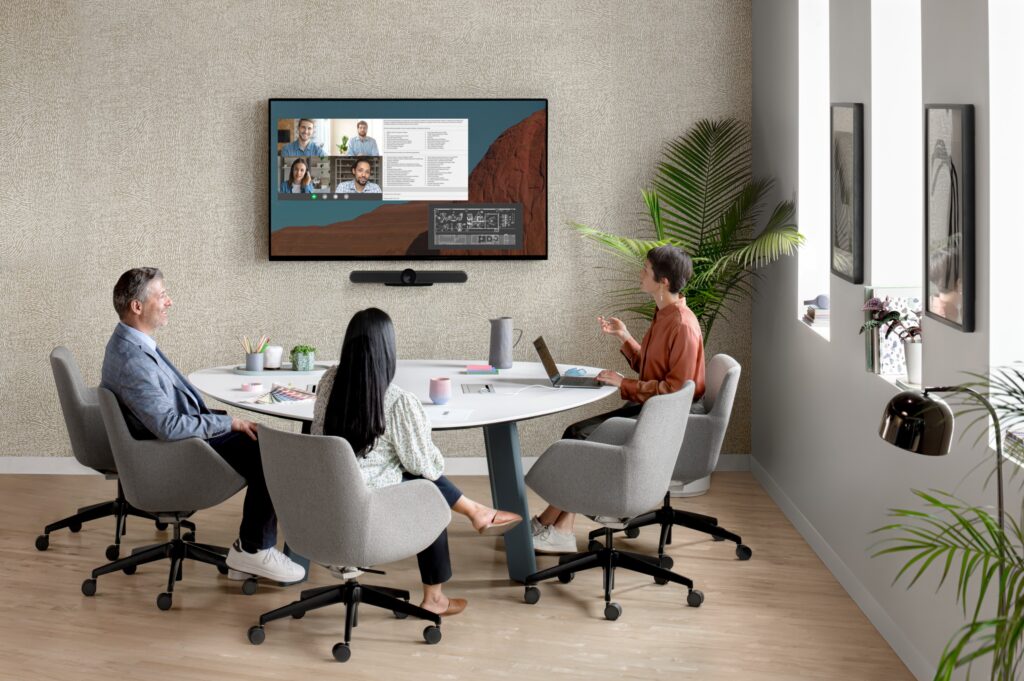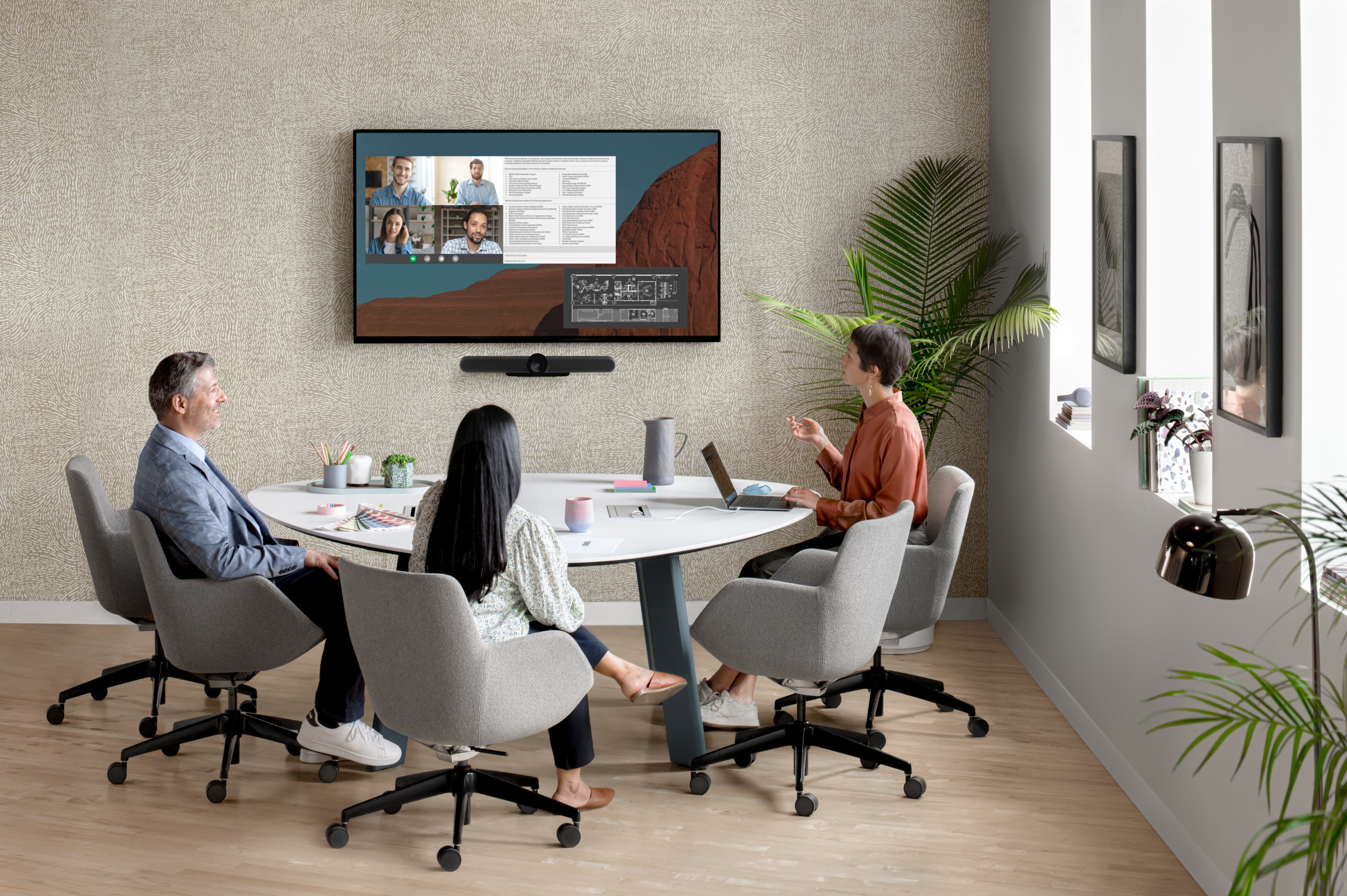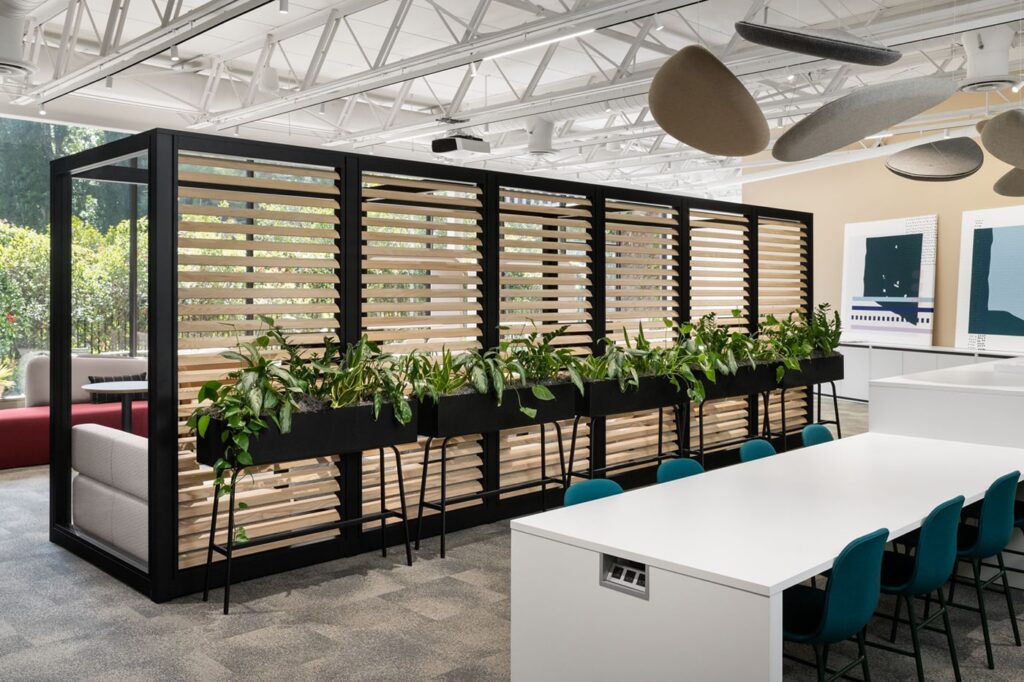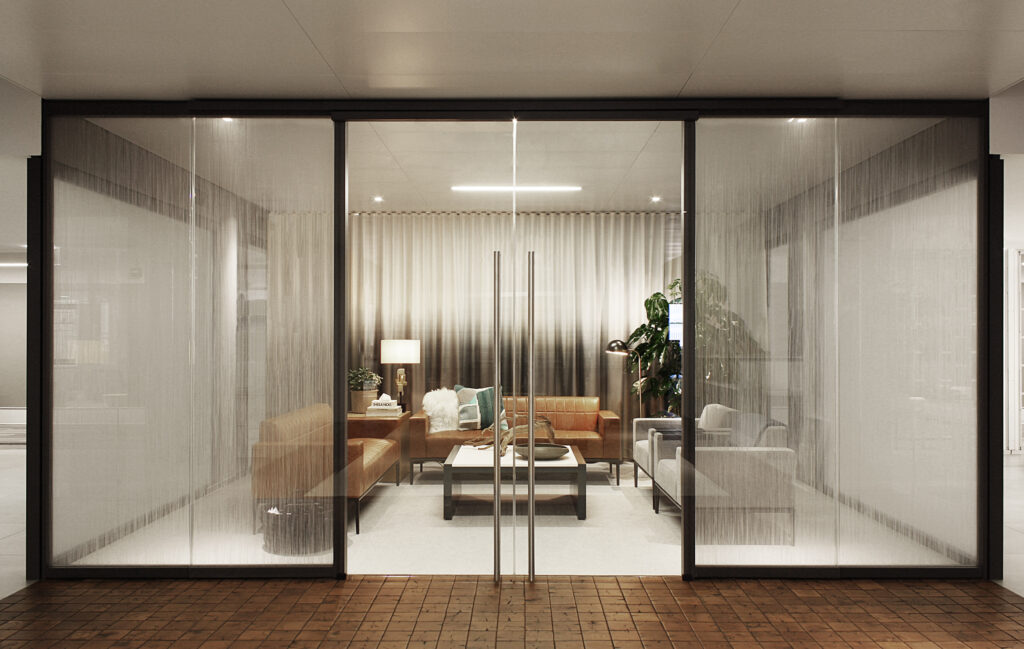There’s a hidden cost to poorly designed meeting spaces.
Walk into almost any office today, and you’ll likely find the same depressing scene: employees struggling to collaborate in conference rooms that actively work against them. These spaces – originally designed for a bygone era of business – have become productivity black holes. Think about the following questions:
- How often are you crammed around a table too small for your group?
- How many meetings start late due to technology issues?
- How much time is wasted resolving room scheduling conflicts?
- How do poor acoustics and awkward layouts stifle creative collaboration?
At CORE Office Interiors, we’ve taken the time to study why most conference rooms fail and how we can transform them into true collaboration hubs. The solution lies in addressing four fundamental flaws in traditional meeting space design.
Flaw #1: Rigid Spaces in a Flexible World
The traditional conference room operates on a dangerous assumption: that all meetings look the same. In reality, today’s teams need spaces that can shift as quickly as their work demands.
Consider the typical scenario: A team of 4 echoes in a 12-person boardroom, dwarfed by an enormous table, while another group struggles to fit 8 people around a table meant for 6. This mismatch isn’t just awkward – it actively discourages participation and creative thinking.
The Solution: Adaptive Design
Modern problems require modern solutions. We now design conference rooms with:
- Modular furniture systems like Allsteel’s configurable tables that can expand or contract to fit different group sizes seamlessly. These aren’t your grandfather’s boardroom tables – they’re precision tools for collaboration.
- Mobile technology stations that allow teams to rearrange screens, whiteboards, and presentation tools on the fly. No more straining to see a monitor bolted to the far wall.
Flaw #2: Technology That Fights Against You
There’s a special kind of frustration reserved for conference room technology. The kind that turns what should be a simple meeting into a technical support call. We’ve all lived through the “Can you hear me now?” dance or the dreaded “Let me just share my screen… no, wait…” routine.
These aren’t minor inconveniences. They’re serious productivity killers that waste valuable time and energy.
The Solution: Invisible Technology
True meeting space technology should be like great service – present when you need it, invisible when you don’t. We eliminate the frustration of poorly equipped conference rooms by integrating seamless, professional-grade AV solutions designed for real-world collaboration.
- Pre-configured room systems where joining a video call is as simple as one touch. No more fumbling with cables.
- Intelligent room controls that remember preferences for temperature and AV settings.
- Ceiling-mounted microphones, making hybrid meetings feel natural rather than forced.
- Soundbars and ceiling speaker systems deliver crystal-clear audio, eliminating muffled voices and distracting echoes.
- Wired backup options ensure mission-critical presentations proceed flawlessly, providing a reliable fallback when wireless connectivity encounters interference.
- Touchscreen displays with built-in whiteboarding and annotation tools turn passive presentations into dynamic collaboration sessions.
- Dual displays optimize hybrid meetings by dedicating one screen to local content and the other to remote participants.
Flaw #3: The Scheduling Black Hole
The Solution: Smart Space Management
Modern scheduling solutions go far beyond the old paper sign-up sheet. Today’s best systems feature:
- Real-time digital displays outside each room showing current and upcoming bookings at a glance.
- Calendar integrations that sync with your existing scheduling systems, eliminating double-booking.
- Intuitive interfaces for ease of access when booking conference spaces.
Flaw #4: Acoustics That Work Against Communication
The Solution: Engineered Soundscapes
Good acoustic design isn’t about eliminating sound – it’s about shaping it. We implement:
- Sound-absorbing panels that blend seamlessly with your design aesthetic while taming echoes.
- Acoustic Masking Technologies that mask distracting conversations without interfering with speech clarity.
- Acoustic ceiling treatments that prevent sound from leaking into adjacent workspaces.
The COREoi Difference: Complete Meeting Space Solutions
What sets our approach apart isn’t just our attention to these individual elements, but how we integrate them into complete solutions. We don’t just design conference rooms – we design better meeting experiences that:
- Reduce setup and technical delays
- Increase actual utilization of meeting spaces
- Improve participant satisfaction and engagement
- Adapt as your needs evolve
Our process includes ongoing support and employee training to ensure your investment continues to pay dividends.
